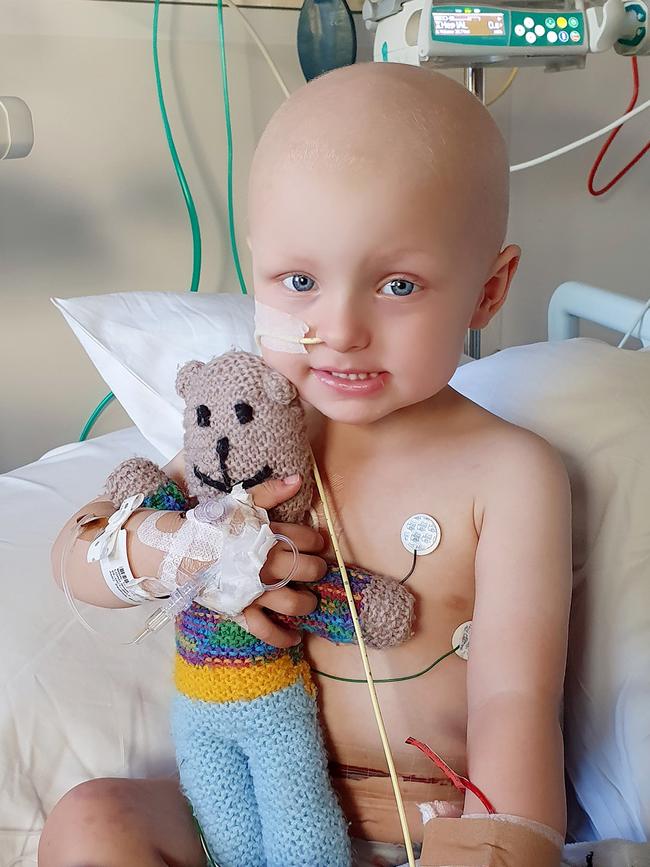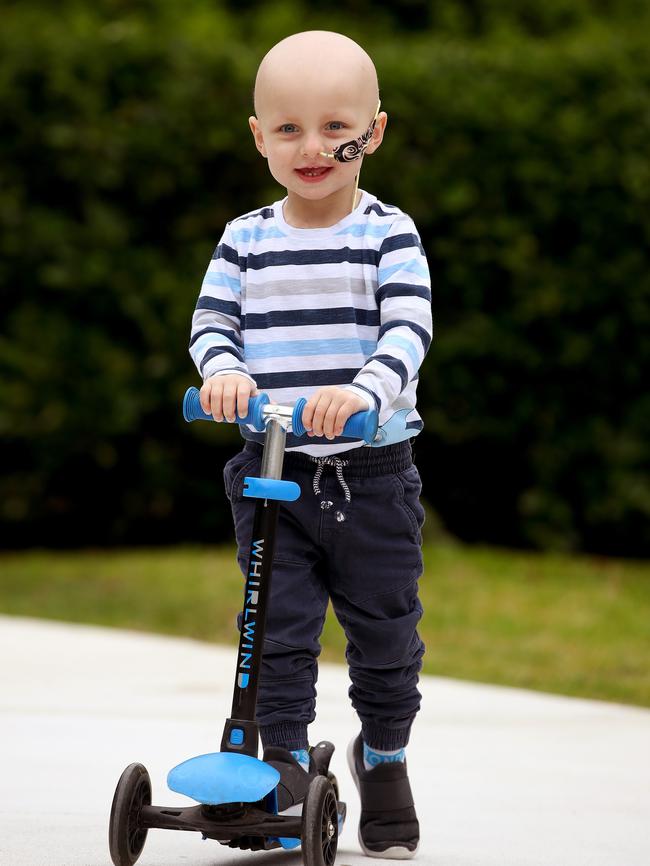Future medicine to harness Covid virus technology to find new cures
The mRNA vaccines have been a game changer for Covid but we are on the cusp of a whole new generation of applications for this new technology including vaccines for cancer, pre-eclampsia and even cures for genetic disorders.
NSW
Don't miss out on the headlines from NSW. Followed categories will be added to My News.
The fight against Covid could help create new drugs that can fight disease, treat and heal inherited conditions and even stop cancer.
The recent announcement of the $96 million pilot facility to develop mRNA and RNA drugs will move well beyond treating Covid.
Professor Pall Thordarson heads up the newly formed UNSW RNA Institute and is excited by the prospects mRNA and RNA will offer.
“We have seen the global impact the mRNA vaccines have had but it is only the tip of the iceberg,” Prof Thordarson said.
“It did not come out of the blue, it had been in development for over a decade.”
RNA, which many viruses are made of, is a genetic material that can direct our cells to make proteins but it can also turn genes on and off.
The success of the mRNA vaccines such as Pfizer and Moderna, has paved the way for a new generation of vaccines.
In fact there are at least six mRNA vaccines against influenza and HIV in the pipeline as well as for Nipah, zika, herpes, dengue, hepatitis and malaria. Sydney researchers are also developing one for pre-eclampsia, a leading cause of stillbirth.
“It’s not just about vaccines, you can use mRNA technology essentially now to get our bodies to make any protein we want, so if disease can be cured by instructing the body to make a particular protein, then you have a treatment option. It is not limited to vaccines,” Prof Thordarson said.
The most exciting applications may cure genetic conditions like haemophilia. Already small RNA therapies are in use for Duchenne’s muscular dystrophy. A similar small RNA therapeutic is now approved in Europe to lower cholesterol with just two doses per year.
Combined with the gene editing technique called CRISPR, a lot of genetic disorders, like spinal muscular atrophy — the biggest genetic killer of children under five — can now be treated with a one-off infusion that corrects the genetic defect. This is already in use in Australia.
“They basically work by shutting down a faulty gene or you can cut out the bad bit and put in a new bit that fixes it,” Prof Thordarson said.
“The success of the mRNA vaccines means people are less sceptical it works, so we have seen this technology is quite safe and will accelerate the development of cancer treatments,” he said.


Prof Maria Kavallaris from the Children’s Cancer Institute (CCI) said it was the future for the treatment for cancer which has, until now, had to rely on the “carpet bombing” approach of chemotherapy to kill off cancer cells.
“We know some tumour cells abnormally express — let’s call them little flags on their surface,” Prof Kavallaris said.
“They are not flags, but receptors on the cell surface and these are unique to certain types of cancer cells. So, if you have vaccine therapy, immune cells recognise this rogue surface receptor, the cancer cells, and the immune system can go and attack that cancer cell.
“With a vaccine you are stimulating the immune system to go and kill that cancer. The reason we get cancer is because cancer cells find ways to evade the immune system, so they are not seen. This is a way to be seen by the immune cells.”
Researchers at the CCI have already discovered a gene that plays a significant role in one of the most common childhood cancers, neuroblastoma. In animal studies they have been able to turn the gene off.
“There is also the idea of switching off the genes that are targeting the growth by delivering the gene-silencing materials to the tumour cells. They are very exciting advances,” she said.
Four-year-old Noah Lord from Orange has spent half his young life battling neuroblastoma with a brutal regimen of six rounds of chemotherapy, two stem cell transplants, five rounds of immunotherapy and three rounds of radiotherapy.
His mother Jamie Lord said she hoped new, targeted treatments in the pipeline could save children from the side effects.
“He has lost his hearing from the chemo, it’s brutal and affects everyone. To sit and watch your child go through that is the worst thing ever. if there was something that can target just the tumour and not knock out his whole body, that would be less trauma on their little bodies and won’t make them as sick,” she said.
Got a news tip? Email weekendtele@news.com.au




